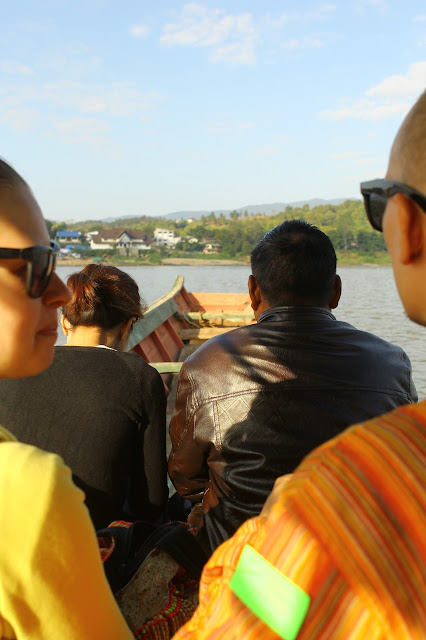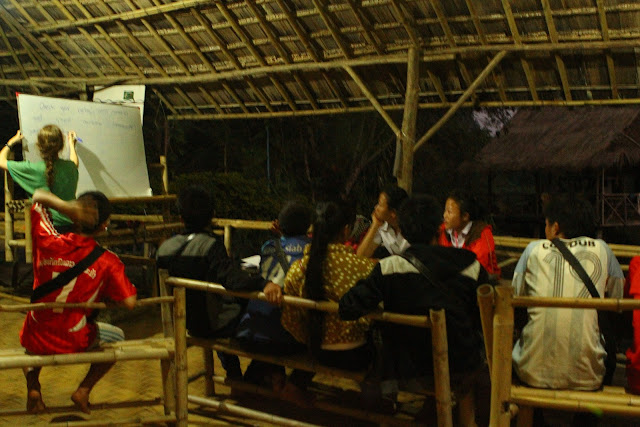To complete the final leg of our 6 month journey, we decided to take Australia's most iconic train journey, from north to south across the continent. The Ghan is named after the Afghan workers who supplied the original construction of the line with their sturdy camels. In this case, train travel works out to be around the same price as flying (if you get the backpacker discount - available to anyone with a HI membership) and is much more comfortable, but obviously takes a great deal longer. We left Darwin at 10:30 in the morning on the once-a-fortnight service that occurs this time of year.
The Red Sleeper service was more comfortable than any carriage we have experienced on the trip, with seats that rotate for groups traveling in foursomes, and enough legroom for a 190cm person to stretch out.
We had thought that sleeping would be extremely uncomfortable, as unlike almost all our other train journeys, we did not have a flat bed to sleep on (the price jump for seat to sleeper is triple). However, because we kept our bags with us instead of checking them, we were able to elevate our feet and recline enough that it was a tolerable night's sleep, though the lack of provided pillows and blankets was strange considering the cost.
Our preconceptions of the landscape turned out to be mostly incorrect, with vast areas of scrubby bush rather than the emptiness of the desert we expected. Certainly from Darwin to Alice Springs it was mostly bush, with a slow change from thicker and more tropical flora to that of the dry interior.
Alice Springs was a welcome stop, with 4 hours to stretch our legs, restock our supermarket supplies, and try to avoid burning to a crisp in the record-breaking heatwave they were experiencing. It was a mere 38 degrees centigrade when we arrived, but they had just experienced many consecutive days above 40. The rail-side gum trees provided some shade from the sun as we were locked out of the train until just before departure.
Not until rural South Australia did we experience the emptiness we had expected, though it was primarily agricultural land recently stripped bare by harvest.
Finally we arrived in Adelaide at 12:30pm two days after departing Darwin. In keeping with the beginning of the journey, we decided to catch public transportation to the house. Frustratingly, the train line that normally links the Ghan to my home in the southern suburbs is currently out of service, so we walked towards the city and took two buses to Seacliff. Once home we emptied everything from our bags and excitedly opened boxes we had sent from England and the road. Our traveling days are done... for now.
The Red Sleeper service was more comfortable than any carriage we have experienced on the trip, with seats that rotate for groups traveling in foursomes, and enough legroom for a 190cm person to stretch out.
Sunset and sunrise were particularly spectacular during the trip, with the wet-season clouds providing a stunning canvas for the vivid colours.
Our preconceptions of the landscape turned out to be mostly incorrect, with vast areas of scrubby bush rather than the emptiness of the desert we expected. Certainly from Darwin to Alice Springs it was mostly bush, with a slow change from thicker and more tropical flora to that of the dry interior.
Alice Springs was a welcome stop, with 4 hours to stretch our legs, restock our supermarket supplies, and try to avoid burning to a crisp in the record-breaking heatwave they were experiencing. It was a mere 38 degrees centigrade when we arrived, but they had just experienced many consecutive days above 40. The rail-side gum trees provided some shade from the sun as we were locked out of the train until just before departure.
Not until rural South Australia did we experience the emptiness we had expected, though it was primarily agricultural land recently stripped bare by harvest.
Finally we arrived in Adelaide at 12:30pm two days after departing Darwin. In keeping with the beginning of the journey, we decided to catch public transportation to the house. Frustratingly, the train line that normally links the Ghan to my home in the southern suburbs is currently out of service, so we walked towards the city and took two buses to Seacliff. Once home we emptied everything from our bags and excitedly opened boxes we had sent from England and the road. Our traveling days are done... for now.
































































